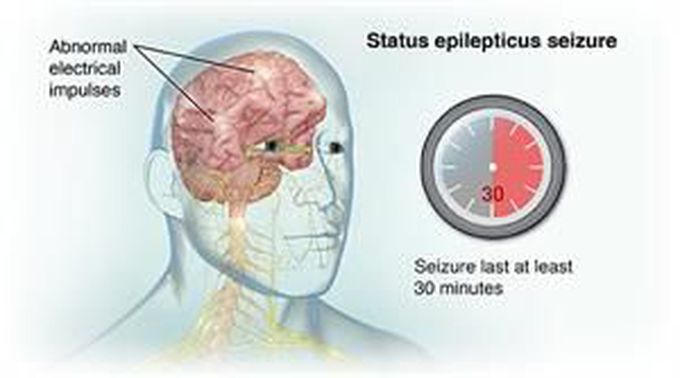


Medical Management of Status Epilepticus in ER
Status epilepticus is a medical emergency; if not treated timely, it might result in serious adverse events, such as permanent brain damage. The early complications of status epilepticus range from hyperthermia to cardiac arrhythmias and pulmonary edema. In the long run, status epilepticus might cause epilepsy and focal neurological defects. The first and foremost step in management of status epilepticus is calling for help since the management usually requires performance of multiple steps in a very short time span. Video-recording may be carried out in order to formulate the action plan for the treatment. IV access is established, if possible. ABC protocol is modified in management of status epilepticus since the cause of airway obstruction u=in such cases is laryngeal spasm; the treatment is anti-epileptic drugs. If the patient is hypoglycemic, 250 mg thiamine followed by 50 mL 50% glucose are administered intravenously. First line therapeutic agent for status epilepticus is benzodiazepines. The route of administration depends on feasibility and safety considerations. The drug can be administered intravenously if IV access is successfully established. Other routes may include buccal, intranasal, and intramuscular. Intravenous benzodiazepines may include lorazepam, diazepam, and clonazepam. IM midazolam or intranasal midazolam may be indicated if IV access is not achievable. Dosage may be repeated if patient is not responding after first dose. The alternate first line anti-epileptic agents are phenobarbital, levetiracetam, phenytoin and sodium valproate. The use of phenobarbital is often avoided due to its long-term complications such as respiratory depression. Valproate may be associated with mild hypotension and mild thrombocytopenia; hence, the use is generally avoided in case of acute stroke and liver disease. Levetiracetam is not used in people with behavioral disorders due to potential psychosis after administration. Subsequent management involves treatment of complications along with diagnosis of cause of the seizure and long-term plan to eliminate such episodes in future. The aim of the treatment in ER is prompt intervention. The greater the duration of seizure, the greater is the likelihood of development of complications. Source: Medical management of status epilepticus: Emergency room to intensive care unit https://www.sciencedirect.com/science/article/abs/pii/S1059131119302043 Image via https://www.hopkinsmedicine.org/health/conditions-and-diseases/status-epilepticus

